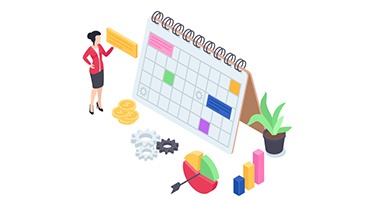Most people think of strategic planning as a marathon 8- or 10-hour or 2-day retreat. You process lots of information, discuss, debate and brainstorm. You have lunch brought in so you can work without a break. You fill flip chart after flip chart with ideas.
Then, around mid-afternoon, when it’s time to start making important decisions, you’ve hit cognitive load. You’re mentally and physically spent.
There Is A Better Way
What if you took those grueling 8 or 10 or 12 hours and divided them into manageable 2- or 3-hour sessions, each of which has a contained set of goals and builds on the one before? What if you had time to reflect, think and process between sessions?
By holding shorter sessions via video conference over a period of time, we have found that organizations actually make progress more quickly and end up with better results. Doing one piece of the process at a time and giving participants a break between sessions can make your strategic planning more thoughtful, integrative and aligning. All of this is done virtually combining video conferencing with a collaborative tool to capture notes and ideas along the way.
There are many benefits to pacing strategic planning sessions and working virtually. Some of these include:
- Working with more clear and defined goals for each session groups go further faster.
- During the time between large group sessions, participants can fully flesh out their ideas on their own or with a few others, so each person’s perspectives will be part of the finished plan.
- Pacing also allows the strategic planning committee or other leadership groups to do refinement between the large group planning sessions.
- Groups reach alignment more easily and quickly because they’ve had the time and space to sift out the chaff and home in on what’s really important.
- It also is often easier for volunteers to fit into their busy schedules.
- AND so important to budget challenged nonprofit organizations – it saves all the cost of paying for everyone to travel to be together.












